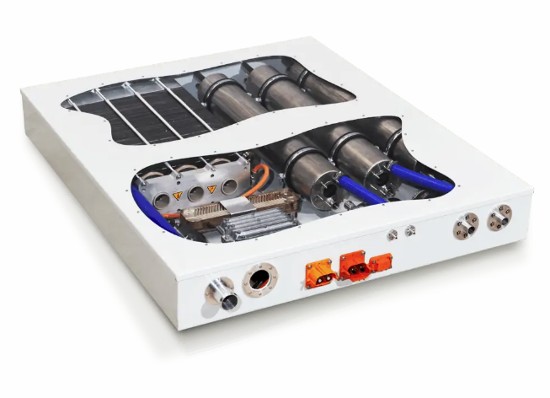Copenhagen-based Maersk describes itself as a logistics company with a fleet of over 700 ships of which it owns 331. It accounts for 16.7% of the world’s container marine trade. In its efforts to meet the net-zero emissions 2050 target, the company is moving away from vessels powered by highly polluting bunker fuel. One of the solutions is twelve new vessels that will burn methanol. But Maersk has a longer-term view of methanol than just burning it in conventional and modified existing marine engines.
It is looking at methanol fuel cells that use a reformer to produce hydrogen to feed onboard fuel cell stacks that generate electricity to power its ships. The emissions from this technology will be water and carbon dioxide (CO2) with the latter being captured to combine with hydrogen again to make more methanol to cycle back into the system in a nice closed-loop configuration. The current order for methanol-powered ships is 12 to be delivered by 2024. Why methanol? States Maersk’s Berit Hinnermann, “it won’t be too different to what we are doing today” and it gives the company an immediate impact within the decade as it implements the transition away from polluting fossil fuels.
In 2021, marine shipping produced 936 million metric tons of CO2 emissions, more than Germany produced that year. In addition, the industry emitted millions of tons of particulate matter, and nitrous and sulphur oxides, both greenhouse gasses. Just in CO2 alone, marine transportation was responsible for 8.4% of total global emissions that year.
For Maersk, the 12 new ships will help it reduce CO2 emissions by 1.5 million tons annually or 4% of what the company produced in total in 2021. Maersk’s announced commitment is for all future new builds to only burn carbon-neutral fuels. That’s why fuel cells are high on its list of technologies to make that achievement possible.
Methanol Fuel Cells Are a Step Better Than Burning Methanol
A Bill Gates-backed investment group, Breakthrough Energy Ventures, is bankrolling a new Danish company, Blue World Technologies, with plans to produce methanol and high-temperature fuel cells. It has plans to produce enough of the fuel and the fuel cells to power five container ships this year, and ten times that number by 2024.
Blue World’s technology uses a high-temperature Proton-Exchange-Membrane combined with methanol-reforming to produce energy conversion efficiencies with zero harmful emissions. The technology provides an electric-power solution that delivers good range, is fast to refuel, and should become a low-cost fuel alternative to petroleum and natural gas alternatives as production scales up.
The stackable flat-pack version of Blue World’s fuel cell technology can be seen in the illustration that accompanies this posting. Stackables can be daisy-chained together depending on the power requirements. Or shipping companies can buy a cube version which is similar in size to conventional marine motor blocks. It has no moving parts and other than air filter changes requires little in the way of preventive maintenance.
Burning methanol as a fuel is a step up from burning bunker fuels or liquid natural gas. But with methanol fuel cells there will be no burning. And the methanol sourced from Blue World will be green.
Green Methanol
Traditionally, methanol is extracted from fossil fuel feedstocks. This process produces greenhouse gas emissions. Blue World produces its methanol using renewable energy and biological feedstocks. The byproducts of the process are CO2 and water with the CO2 compressed and fed back into the system to up the methanol yield.
The company is still in an early stage of its growth but the fuel cell technology it is delivering looks very promising. And although Maersk’s initial 12 ships will burn the methanol it gets, the plan for future orders comes with onboard fuel cell technology and no more burning.









